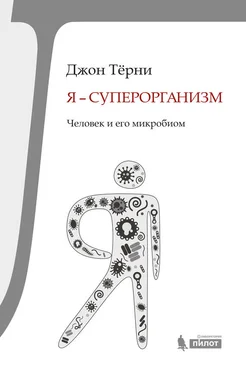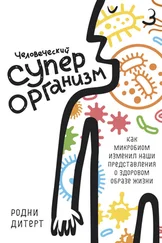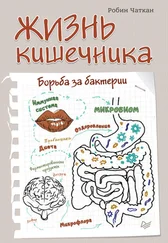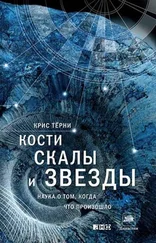Ley, R., et al (2005). Obesity alters gut microbial ecology. Proceedings of the National Academy of Sciences , 102: 11070–11075.
Li, Juanha, et al (2014). An Integrated Catalogue of reference genes in the human gut microbiome. Nature Biotechnology , выложено на сайте 6 июля 2014 года.
Loscalzo, Joseph (2013). Gut Microbiota, the Genome, and Diet in Atherogenesis. New England Journal of Medicine , 368:17.
Luckey, T. (1972). Introduction to intestinal microecology. American Journal of Clinical Nutrition . 25: 1292–1294.
Lyte, Mark (2014). Microbial endocrinology: Host – microbiota neuroendocrine interactions. Gut Microbes , 5: 28682.
Lyte, Mark, and Primrose Freestone, eds (2010). Microbial Endocrinology: Interkingdom Signaling in Infectious Disease and Health . Springer.
Martin, Emily (1994). Flexible Bodies: The role of immunity in American culture from the days of polio to the age of AIDS . Beacon Press.
Matzinger, P. (2002). The danger model: a renewed sense of self. Science , 296: 301–305.
Maxman, A. (2013). Designing for microscopic life in the great indoors (Interview with Jessica Green). New Scientist , 20 July.
Maynard, Craig, et al (2012). Reciprocal interactions of the intestinal microbiota and immune system. Nature , 489: 231–241.
Mazmanian, S., et al (2005). An immunomodulatory molecule of symbiotic bacteria directs maturation of the host immune system. Cell , 122: 107–118.
Mazmanian, Sarkis, et al (2008). A microbial symbiosis factor prevents intestinal inflammatory disease. Nature , 453: 620–625.
Mazmanian, Sarkis (2009). Microbial health factor. The Scientist , August 1.
McCord, Aleia et al (2013). Faecal microbiomes of non-human primates in Western Uganda reveal species-specific communities largely resistant to habitat perturbation. American Journal of Primatology , 22238.
McFall-Ngai, Margaret (2007). Care for the community. Nature , 445: 153.
McFall-Ngai, Margaret, et al (2013). Animals in a bacterial world, a new imperative for the life sciences. Proceedings of the National Academy of Sciences , 110, 3229–3236.
Minot, S., et al (2013). Rapid evolution of the human gut virome. Proceedings of the National Academy of Sciences , 110: 12450–12455.
Modi, Sheetal (2013). Antibiotic treatment expands the resistance reservoir and ecological network of the phage metagenome. Nature , 499: 219–223.
Moeller, Andrew, et al (2012). Chimpanzees and humans harbour compositionally similar gut enterotypes. Nature Communications , 3: 1179.
Moeller, Andrew, et al (2014). Rapid changes in the gut microbiome during human evolution. Proceedings of the National Academy of Sciences , Nov 3. doi: 10.1073/pnas. 1419136111.
Montgomery, Scott (1996). The Scientific Voice . Guilford Press.
Morrow, L., et al (2010). Probiotic prophylaxis of ventilator-associated pneumonia: a blinded, randomized, controlled trial. American Journal of Respiratory & Critical Care Medicine . 182: 1058–1064.
Naik, Shruti, et al (2012). Compartmentalized Control of Skin Immunity by Resident Commensals. Science , 337: 1115–1119.
Nakatsuji, Teruaki, et al (2013). The microbiome extends to subepidermal compartments of normal skin. Nature Communications , 4. Feb 5.
Nelson, David, et al (2012) Bacterial Communities of the Coronal Sulcus and Distal Urethra of Adolescent Males. PloS One , 7: e36298.
Nerlich, Brigitte, and Lina Hellsten (2009). Beyond the human genome: microbes, metaphors and what it means to be human in an interconnected post-genomic world. New Genetics and Society , 28: 19–36.
Noble, Denis (2006). The Music of Life: Biology Beyond Genes . Oxford University Press.
Norris, Vic, et al (2013). Hypothesis: bacteria control host appetites. Journal of Bacteriology , 195:411.
O’Malley, Maureen (2014). Philosophy of Microbiology . Oxford University Press.
Ogilvie, Lesley, et al (2013). Genome signature-based dissection of human gut metagenomes to extract subliminal viral sequences. Nature Communications , 3420.
Okada, H., et al (2010). The ‘hygiene hypothesis’ for autoimmune and allergic diseases: an update. Clinical & Experimental Immunology , 160: 1–9.
Paxson, Heather (2008). Post-Pasteurian cultures: The microbiopolitics of raw-milk cheese in the United States. Cultural Anthropology , 23: 15–47.
Petrof, E., et al (2013). Microbial ecosystems therapeutics: a new paradigm in medicine? Beneficial Microbes 4: 53–65.
Petrof, E., et al (2013). Stool substitute transplant therapy for the eradication of C. difficile infection: RePOOPulating the gut. Microbiome 1:3.
Pollan, Michael (2006). The Omnivore’s Dilemma: A Natural History of Four Meals . Penguin.
Pradeu, Thomas (2012). The Limits of the Self: Immunology and Biological Identity . Oxford University Press.
Pradeu, Thomas, and Edwin Cooper (2012). The danger theory: 20 years later. Frontiers in Immunology , 3: 287.
Pray, Leslie, et al (2012). The Human Microbiome, Diet and Health: Workshop Summary . Institute of Medicine, US.
Price, Lance (2010). The Effects of Circumcision on the Penis Microbiome. PloS One , 5: e8422.
Pride, David, et al (2012). Evidence of a robust resident bacteriophage population revealed through analysis of the human salivary genome. ISME Journal , 6: 915–926.
Ravel, J., et al (2011). Vaginal microbiome of reproductive-age women. Proceedings of the National Academy of Sciences . 108 Suppl 1:4680–7.
Relman, David (2012). The human microbiome: ecosystem resilience and health. Nutrition Reviews , 70: S2 – S9.
Relman, David, et al (2009). Microbial Evolution and Co-Adaptation – A Tribute to the Life and Scientific Legacies of Joshua Lederberg . National Academy of Sciences, US.
Richmond, Ben (2014). Cola-flavoured Genitals, and Other Potential Uses for Microbiome Hacking. http://motherboard.vice.com September 11.
Ridaura, V., et al (2013). Gut microbiota from twins discordant for obesity modulate metabolism in mice. Science, 341: 1241214.
Roach, Mary (2013). Gulp: Adventures in the Alimentary Canal . Oneworld.
Rook, Graham (2012). A Darwinian view of the Hygiene or ‘Old Friends’ hypothesis. Microbe , 7: 173–180.
Rook, Graham (2013). Regulation of the immune system by biodiversity from the natural environment: An ecosystem service essential to health. Proceedings of the National Academy of Sciences , 110: 18360–18367.
Rosebury, Theodor (1969). Life on Man . Secker and Warburg.
Sachs, Jessica Snyder (2007). Good Germs, Bad Germs: Health and Survival in a Bacterial World . Hill and Wang.
Saey, Tina (2014). Here’s the poop on getting your gut microbiome analysed. www.sciencenews.org June 17.
Salter, Susannah, et al (2014). Reagent and laboratory contamination can critically impact sequence-based microbiome analysis. BMC Biology , 12: 87.
Sanford, James, and Richard Gallo (2013). Functions of the skin microbiota in health and disease. Seminars in Immunology , 25: 370–377.
Scheuring, Istvan, and Douglas Wu (2012). How to assemble a beneficial microbiome in three easy steps. Ecology Letters , 15: 1300–1307.
Schluter, Jonas, and Kevin Foster (2012). The evolution of mutualism in gut microbiota via epithelial selection. PLoS Biology , 10: e1001424.
Schnorr, Stephanie, et al (2014). Gut microbiome of the Hadza hunter-gatherers. Nature Communications , 5: 3654.
Читать дальше
Конец ознакомительного отрывка
Купить книгу






